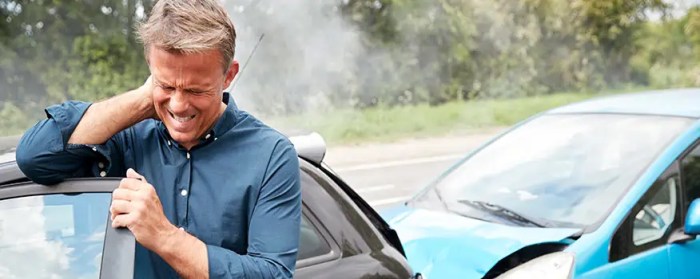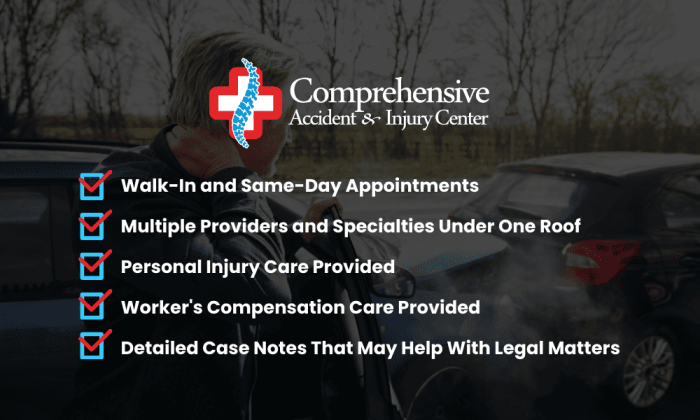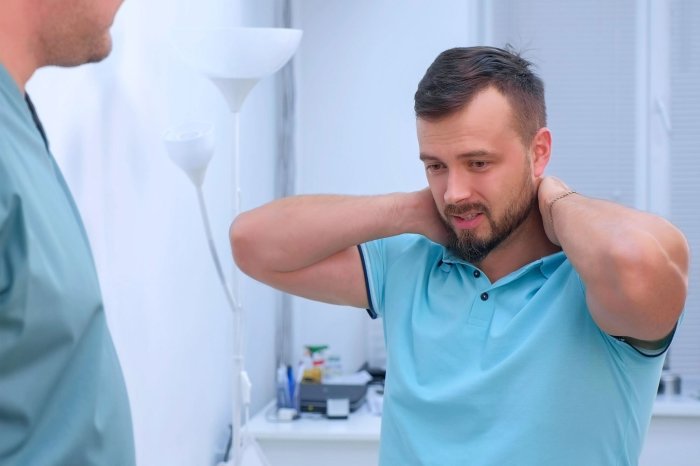Car accident walk in clinic - Car accident walk-in clinics offer immediate medical attention following a car accident. These clinics provide a convenient alternative to emergency rooms for less severe injuries, allowing for quicker treatment and potentially lower costs. Understanding the services, legal aspects, and patient experience is crucial for anyone involved in a car accident.
Walk-in clinics typically handle injuries like sprains, strains, minor cuts, and bruises. They can provide X-rays, administer pain medication, and offer initial assessments for more serious injuries before referring patients to specialists or hospitals if necessary. The process generally involves registration, a medical evaluation, treatment, and documentation for insurance purposes. This guide aims to clarify the process and answer common questions.
Walk-in Clinics and Car Accident Injuries

Source: flchirohealth.com
Following a car accident, seeking prompt medical attention is crucial. Walk-in clinics offer a convenient and often less expensive alternative to emergency rooms for treating minor to moderate injuries. This article will guide you through understanding the services, legal aspects, and overall patient experience associated with using a walk-in clinic after a car accident.
Walk-in Clinic Services and Car Accident Injuries, Car accident walk in clinic
Walk-in clinics specializing in car accident injuries typically offer a range of services designed to assess and treat common post-accident ailments. These services aim to provide immediate care and documentation necessary for insurance claims.
- Typical Services: X-ray services (for fractures, sprains, dislocations), wound cleaning and suturing, pain management (medication and physical therapy recommendations), diagnostic testing (blood tests, urine tests), splint and brace application, referral to specialists (orthopedists, neurologists, etc.), documentation for insurance purposes.
- Common Injuries Treated: Soft tissue injuries (sprains, strains, whiplash), minor fractures, lacerations, concussions (mild traumatic brain injuries), bruises and contusions.
- Walk-in Clinic vs. Emergency Room: Walk-in clinics are ideal for non-life-threatening injuries, offering quicker access and often lower costs compared to emergency rooms. Emergency rooms handle life-threatening situations and severe injuries requiring immediate, advanced medical intervention.
- Treatment Process at a Walk-in Clinic: The process is typically straightforward and efficient. Below is a detailed breakdown:
| Step | Action | Time Estimate | Documentation Required |
|---|---|---|---|
| 1 | Check-in and initial assessment | 15-30 minutes | Driver's license, insurance information |
| 2 | Medical examination and diagnostic tests | 30-60 minutes | None, unless additional tests are required |
| 3 | Treatment and medication (if needed) | 15-30 minutes | None |
| 4 | Check-out and documentation | 15-20 minutes | Insurance information, accident report (if available) |
Legal and Insurance Aspects
Proper documentation of your injuries and treatment is vital for a successful insurance claim. A walk-in clinic visit provides essential medical records that support your claim. Effective communication with your insurance provider is also key.
- Importance of Documentation: Detailed medical records from the walk-in clinic serve as irrefutable evidence of your injuries and the treatment you received. This documentation is crucial when negotiating with insurance companies.
- Impact on Personal Injury Claims: A timely visit to a walk-in clinic strengthens your personal injury claim by providing immediate medical attention and a documented timeline of your injuries.
- Documentation Provided: Walk-in clinics typically provide patients with a detailed report including a diagnosis, treatment plan, and billing information. They may also provide copies of x-rays or other diagnostic test results.
- Communicating with Insurance: Be clear and concise when communicating with your insurance company. Provide them with copies of your medical records from the walk-in clinic promptly and answer their questions thoroughly and honestly.
Role of Medical Professionals
Walk-in clinics employ various medical professionals, each playing a crucial role in assessing and treating car accident injuries. The diagnostic tools and procedures used are tailored to the nature of the injuries sustained.
- Medical Professionals: Physicians, Physician Assistants, Nurse Practitioners, Medical Assistants, X-ray Technicians.
- Diagnostic Tools and Procedures: Physical examination, X-rays, blood tests, urine tests, neurological assessments.
- Typical Assessment Steps (Flowchart): Patient presents → Initial assessment and history taking → Physical examination → Diagnostic testing (if necessary) → Diagnosis → Treatment plan → Documentation and follow-up care.
- Walk-in Clinic vs. Specialists: Walk-in clinics provide initial assessment and treatment. For complex or severe injuries, referral to specialists (orthopedists, neurologists, etc.) is essential for specialized care.
Patient Experience and Considerations: Car Accident Walk In Clinic

Source: comprehensiveaccidentandinjury.com
Choosing the right walk-in clinic is essential for a positive patient experience. Asking the right questions and understanding the limitations of walk-in clinics will help you make an informed decision.
- Questions to Ask: What types of car accident injuries do you treat? Do you accept my insurance? What are your hours of operation? What diagnostic tools are available? What is your process for documenting injuries for insurance purposes?
- Benefits and Limitations: Benefits include convenience, quicker access to care, and potentially lower costs than emergency rooms. Limitations include limited resources for complex injuries, and possible longer wait times during peak hours.
- Hypothetical Patient Experience: Imagine Sarah, who was involved in a fender bender. She went to a nearby walk-in clinic, where she was greeted by friendly staff, efficiently checked in, and promptly seen by a physician's assistant. After a thorough examination, X-rays were taken, and she received treatment for a minor sprain. The clinic staff ensured she had all the necessary documentation for her insurance claim.
The entire process was relatively quick and painless.
- Ensuring Best Care: Arrive prepared with your insurance information and accident details. Clearly communicate your symptoms and concerns. Ask questions to clarify any uncertainties.
Cost and Accessibility of Care
The cost of treatment at a walk-in clinic varies based on several factors, and accessibility depends on insurance coverage and location. Understanding these factors helps patients make informed choices.
- Cost Comparison: Generally, walk-in clinics are less expensive than emergency rooms for non-life-threatening injuries. Costs vary depending on services received.
- Accessibility and Insurance: Most walk-in clinics accept various insurance plans. For those without insurance, payment plans or sliding-scale fees might be available. Check with individual clinics for details.
- Factors Influencing Cost: Type of injury, diagnostic tests performed, medications prescribed, length of visit.
- Finding Affordable Clinics: Check online directories, contact your insurance provider, and ask for recommendations from your primary care physician or local emergency rooms.
Summary

Source: totalvitalitymedical.com
Navigating the aftermath of a car accident can be stressful, but understanding your options for medical care is a crucial first step. Car accident walk-in clinics offer a valuable resource for those with less severe injuries, providing timely treatment and essential documentation for insurance claims. Remember to prioritize your health, document everything carefully, and communicate clearly with your insurance provider.
By being informed and proactive, you can better manage the process and focus on recovery.
General Inquiries
What if my injuries worsen after leaving the walk-in clinic?
Return to the clinic or seek immediate care at an emergency room. Document any changes in your condition.
Can I go to a walk-in clinic even if I don't have health insurance?
Yes, but be prepared to pay out-of-pocket. Some clinics offer payment plans or discounts.
What types of insurance do walk-in clinics accept?
This varies by clinic. Contact the clinic directly to inquire about accepted insurance providers.
Do walk-in clinics provide ongoing care after the initial visit?
Usually not. They primarily offer initial assessment and treatment. Further care may require referral to a specialist.
How long does a typical visit to a car accident walk-in clinic take?
It varies depending on the severity of injuries but can range from 30 minutes to a few hours.


